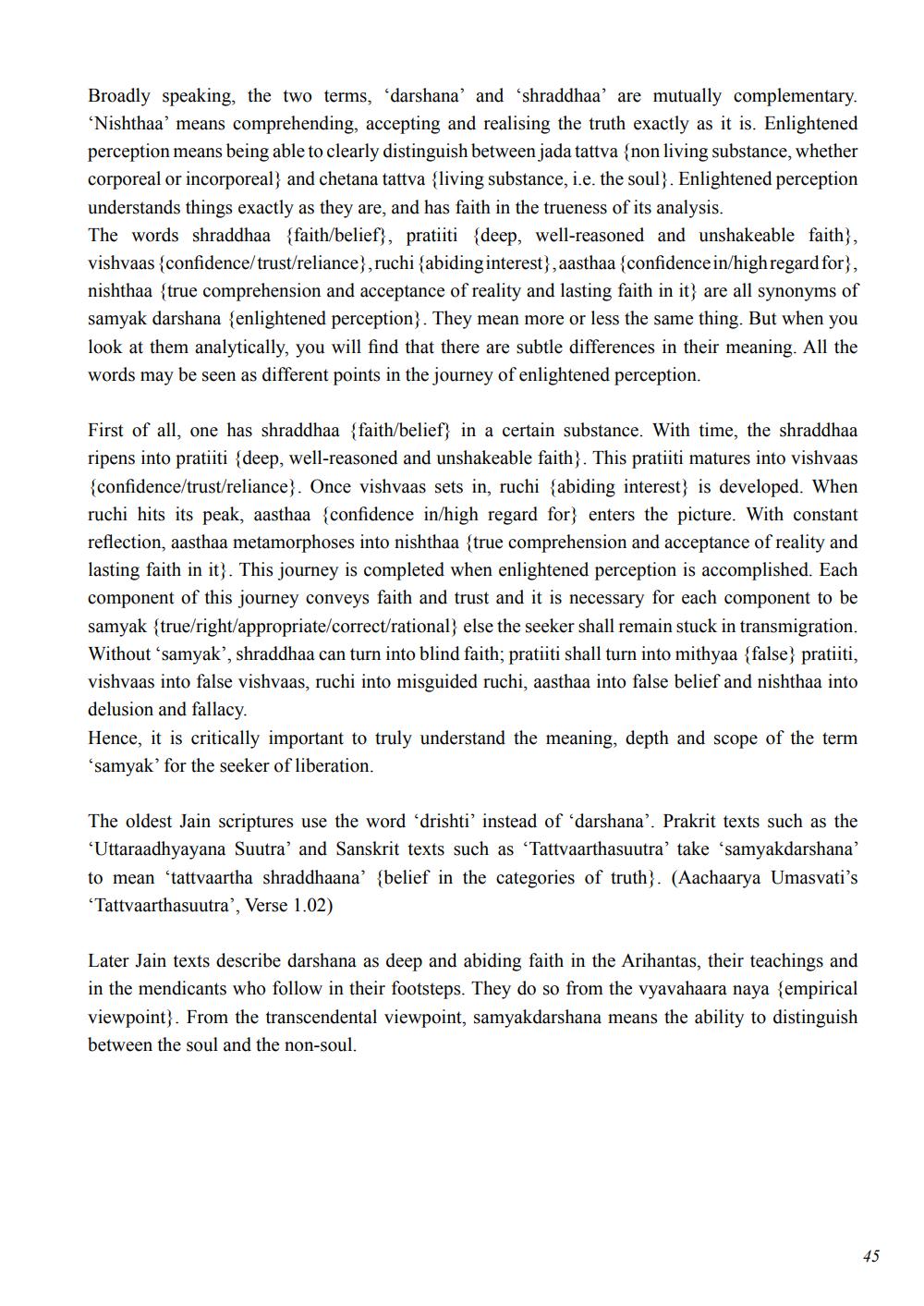________________
Broadly speaking, the two terms, darshana' and 'shraddhaa' are mutually complementary. "Nishthaa' means comprehending, accepting and realising the truth exactly as it is. Enlightened perception means being able to clearly distinguish between jada tattva {non living substance, whether corporeal or incorporeal) and chetana tattva {living substance, i.e. the soul). Enlightened perception understands things exactly as they are, and has faith in the trueness of its analysis. The words shraddhaa {faith/belief}, pratiiti {deep, well-reasoned and unshakeable faith}, vishvaas {confidence/trust/reliance},ruchi abiding interest}, aasthaa {confidence in/high regard for}, nishthaa {true comprehension and acceptance of reality and lasting faith in it) are all synonyms of samyak darshana enlightened perception. They mean more or less the same thing. But when you look at them analytically, you will find that there are subtle differences in their meaning. All the words may be seen as different points in the journey of enlightened perception.
First of all, one has shraddhaa {faith/belief in a certain substance. With time, the shraddhaa ripens into pratiiti (deep, well-reasoned and unshakeable faith). This pratiti matures into vishvaas {confidence/trust/reliance. Once vishvaas sets in, ruchi abiding interest is developed. When ruchi hits its peak, aasthaa confidence in/high regard for enters the picture. With constant reflection, aasthaa metamorphoses into nishthaa {true comprehension and acceptance of reality and lasting faith in it. This journey is completed when enlightened perception is accomplished. Each component of this journey conveys faith and trust and it is necessary for each component to be samyak (true/right/appropriate/correct/rational} else the seeker shall remain stuck in transmigration. Without 'samyak’, shraddhaa can turn into blind faith; pratiiti shall turn into mithyaa (false) pratiiti, vishvaas into false vishvaas, ruchi into misguided ruchi, aasthaa into false belief and nishthaa into delusion and fallacy. Hence, it is critically important to truly understand the meaning, depth and scope of the term samyak' for the seeker of liberation.
The oldest Jain scriptures use the word 'drishti' instead of darshana'. Prakrit texts such as the 'Uttaraadhyayana Suutra and Sanskrit texts such as 'Tattvaarthasuutra' take 'samyakdarshana' to mean 'tattvaartha shraddhaana' {belief in the categories of truth}. (Aachaarya Umasvati's “Tattvaarthasuutra', Verse 1.02)
Later Jain texts describe darshana as deep and abiding faith in the Arihantas, their teachings and in the mendicants who follow in their footsteps. They do so from the vyavahaara naya {empirical viewpoint. From the transcendental viewpoint, samyakdarshana means the ability to distinguish between the soul and the non-soul.
45




